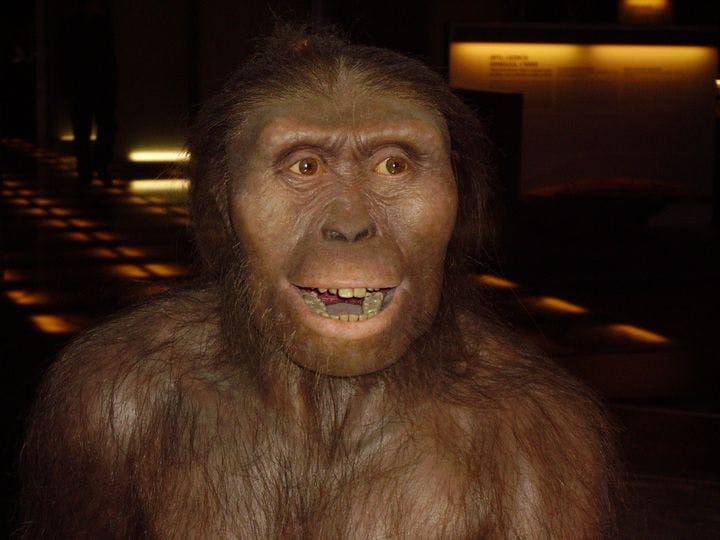Spring 2010
Skin Story
– The Wilson Quarterly
Hairless skin may not seem a very notable human trait, but it has allowed significant advantages over our closest primate relations.
Hairless skin may not seem a very notable human trait when compared with our use of advanced tools or spoken language, but our fur-free epidermis is among the significant distinctions that set us apart from our closest primate relations, writes Nina G. Jablonski, a professor and head of the anthropology department at Pennsylvania State University.
Protohumans probably started losing their hair in response to a change in climate about three million years ago. The lush region in east and central Africa that sustained australopithecines dried out, and the fruits, leaves, tubers, and seeds that were once abundant disappeared, as did fresh water. These human ancestors had to abandon a relatively leisurely foraging way of life and take a more active approach to finding the calories and water necessary to keep them alive. It was also around this time that australopithecines began to hunt for meat. All this extra activity put these hairy human ancestors at constant risk of overheating; soon enough, that body hair thinned out.
Furry creatures employ specialized tactics to keep themselves cool: Dogs pant; cats lie low in the heat of the day. The little bit of hair that humans retain on the tops of their heads also helps people stay cool by shielding their scalps from the sun. But for primates, sweating is the modus operandi. And thanks to our nearly hairless skin and an abundance of eccrine glands (between two and five million), humans have the most efficient sweating system around—so efficient, in fact, that on a hot day it’s possible for a human to outrun a horse in a marathon.
Jablonski writes that our unique skin led to the emergence of other distinctly human traits. She speculates that our skin and sweating abilities made possible “the dramatic enlargement of our most temperature- sensitive organ, the brain.” Human modes of communication such as facial expressions and body language replaced raising our hackles. Skin may not be very deep, but it goes right to the core of who we are.
* * *
The Source: "The Naked Truth" by Nina G. Jablonski, in Scientific American, February 2010.
Photo courtesy of Wikimedia Commons
